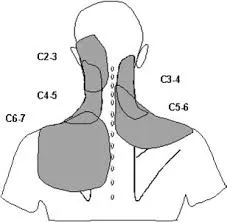Consensus practice guidelines on interventions for lumbar facet joint pain from a multispecialty, international working group
Please click the link below to view the full article.
http://rapm.bmj.com/content/early/2020/04/03/rapm-2019-101243
Treating your facet joint pain: Understanding the Medial Branch Block and Radiofrequency(RFA) procedures
What
are facet joints?
Facet joints connect the vertebrae, the bones of the spine in the neck, upper back, and lower back. They allow the spine to bend and twist. Facet joints are found on both sides of the spine. Each joint is about the size of a thumbnail. Facet joints are named for the vertebrae they connect and the side of the spine they are on. The right C4-C5 facet joint, for example, joins the 4th and 5th cervical vertebrae on the right side. Medial branch nerves are the nerves that provide sensation from the facet joints. They tell the brain when the facet joints have been injured or are causing pain.
What is facet pain?
You may feel pain if a facet joint is injured, inflamed, or has arthritis. The pain can feel like muscle tension or could be sharp and severe. The facet joints often have referred pain, or pain that travels to other places.

This is a
diagram of possible pain locations from cervical facet joint pain,
depending on which joints are causing the problem. Pain is typically
in the neck but can travel into the head, shoulders, and upper back
as well.
coming from, we must do a diagnostic block. This gives us information about whether the pain is coming from those joints or not. If the medial branch blocks are successful, we will perform a Radiofrequency Ablation (RFA).
What are the procedures like?
Your treatment will follow a three step pathway, and we only go on to the next step if we get 80% or more relief in your pain from each procedure.
- Step One: Diagnostic Block. You come into the office and on the procedure table. Needles are placed near the facet joints on one or both sides. Then a small amount of numbing medicine is injected to numb the nerves. For the next few hours the nerves are numb and you should perform some activities that normally cause you pain. If you notice your pain is 80% better during these hours, this is a successful procedure and we will move forward to step two. If you do not get much pain relief, we will discuss other options including maybe trying different locations. Either way, the numbing medicine wears off usually by the end of the day or the next morning and your pain will likely return to its usual level. This was just a test and long term relief is not expected.
- Step Two: Confirmation Block. If you got 80% improvement from step one we do the same procedure again to confirm. Sometimes we can get a false positive and it is important to do two blocks before moving on to the RFA to be sure that your pain is coming from your facet joints. If you get 80% relief, we go to step 3.
- Step Three: The Radiofrequency Ablation. After two successful diagnostic blocks we will move on to an RFA. Needles are placed in a similar way and then RFA probes are inserted inside the needles. They connect to a machine and we do some tests to make sure we are not near any important nerves that are involved in movement or sensation to your arms. Once the tests show us we are in a good location, we numb the nerves. Then the probes use radiofrequency energy to disrupt nerve function. After the nerve is disrupted, it can no longer transmit pain from an irritated facet joint.
What happens after an RFA?
Some people feel sore for a few days, up to two weeks at most. Over the counter medications are typically enough to treat this. After your body recovers, you should feel relief from your typical neck pain. This is a good time to do physical therapy so that your body can become stronger. The nerves grow back over time and we want to use this pain free time to rehabilitate and create a stronger and more balanced body to hopefully decrease the likelihood of any future pain causing issues. The average duration of relief is about 6 months to 2 years.
